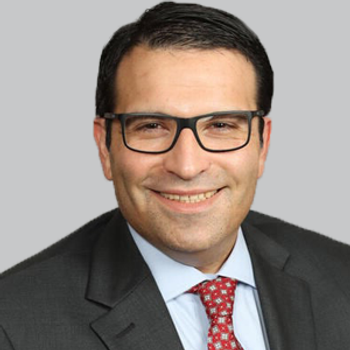
Two-Year Open-Label Data Highlight Frexalimab’s Impact on Disease Activity in Relapsing Multiple Sclerosis
Key Takeaways
- Frexalimab showed safety and efficacy in reducing disease activity in relapsing MS over two years, supporting phase 3 trials.
- Low gadolinium-enhancing T1 lesions and a low annualized relapse rate were observed, with 92% of patients relapse-free.
Long-term data from a phase 2 study extension suggest that frexalimab, a CD40L inhibitor, maintains disease control and is well-tolerated in relapsing multiple sclerosis, reinforcing its potential as a next-generation treatment.
Data from an open-label extension of a phase 2 study (NCT04879628) assessing investigational frexalimab (Sanofi), a CD40L inhibitor, revealed that the treatment was safe, and resulted in reduced disease activity in patients with relapsing multiple sclerosis over a 2-year period. Overall, the findings support the therapy’s development in phase 3 trials, which are ongoing.1
After 96 weeks of treatment, the total number of gadolinium-enhancing (Gd+) T1 lesions remained low among treated patients, regardless of whether they were on continuous frexalimab or switched from placebo at week 12. Among those who received the intravenous (IV) form of treatment, investigators reported a mean of 0.1 (SD, 0.5) Gd+ T1 lesions for the continuous 1200 mg group, and a mean of 0.1 (SD, 0.3) for those who switched. In the subcutaneous (SC) group, the mean number was 0.4 or below across all groups.
These data were shared in a poster presentation at the
Frexalimab is a second-generation investigational anti-CD40L antibody that blocks the CD40/CD40L pathway–key to adaptive and innate immunity–offering a potetnail best-in-class approach to addressing the acute and chronic neuroinflammation in MS without causing lymphocyte depletion. In the study, participants were randomized (4:4:1:1) to frexalimab 1200 mg IV q4w, frexalimab 300 mg SC q2w, or matching placebo, with the SC dose increased to 1800 mg q4w during OLE (first high-dose on August 21, 2023) to match the exposure of the 1200 mg q4w IV dose.
In the latest findings, new/enlarging T2 lesion count remained low for those on IV frexalimab 1200 mg through week 96. Furthermore, the annualized relapse rate (ARR) after 96 weeks of treatment was low (0.08; 95% CI, 0.03-0.18) in that same arm. Overall, 92% of patients were relapse-free, and the therapy appeared to be well-tolerated, with the most common adverse events (AEs) being nasopharyngitis, headache, and COVID-19.
Previously reported findings at 48 weeks showed that frexalimab had a significant impact on
From baseline to week 48, participants who eventually switched from placebo to high-dose frexalimab had a 24% reduction in plasma NfL. Following the crossover at week 12, this group saw a 39% reduction in such levels up to the 48-week time point. Participants in the placebo-low group who switched to low-dose frexalimab at week 12 experienced a 33% reduction in plasma NfL levels from baseline (11.8 [SD, 1.9] pg/mL) to week 48 (7.8 [SD, 2.1] pg/mL) and by 39% from week 12 when switched from placebo to low-dose frexalimab.
READ MORE:
At the
FREXALT consists of two independent phase 3, double-blind, double-dummy, active-controlled trials (FREXALT-1 and FREXALT-2) evaluating the efficacy and safety of frexalimab versus teriflunomide (Aubagio; Sanofi) in relapsing MS. The trials enroll patients aged 18-55 years with Expanded Disability Status Scale (EDSS) scores below 5.5 who have had at least one relapse in the past year, two relapses in the past two years, or at least one Gd+ lesion in the past year. Each study includes 700 participants with a treatment duration of 20-40 months (up to 144 weeks).
The primary endpoint is annualized relapse rate (ARR), while secondary endpoints include time to onset of 6-month confirmed disability worsening (CDW), progression independent of relapse activity, new or enlarging T2 lesions, new Gd+ T1 lesions, brain volume loss, cognitive function, quality of life, and plasma neurofilament light and serum immunoglobulin levels. Both studies will also assess frexalimab’s plasma concentration over time.
FREVIVA, a similar study, evaluates frexalimab administered every four weeks compared with placebo in non-relapsing secondary progressive MS. The trial aims to enroll 858 participants aged 18-60 years with EDSS scores of 3.0-6.5, no clinical relapses in the past 24 months, and documented disability progression in the previous 12 months as determined by an Eligibility Adjudication Committee. The primary endpoint is time to onset of 6-month confirmed disability progression (CDP).
REFERENCES
1. Vermersch P, Granziera C, Mao-Draayer Y, et al. Safety and Efficacy of Frexalimab from the Phase 2 Open-label Extension in Participants with Relapsing Multiple Sclerosis: 2-year Results. Presented at: 2025 AAN Annual Meeting; April 5-9; San Diego, CA. ABSTRACT 001785
2. Frexalimab new phase 3 data showed reduction of key biomarker of nerve cell damage in relapsing MS. News release. June 28, 2024. Accessed April 4, 2025. https://www.sanofi.com/en/media-room/press-releases/2024/2024-06-28-15-30-00-2906026
3. Krieger S, Vermersch P, Chitnis T, et al. Frexalimab in relapsing multiple sclerosis and non-relapsing secondary progressive multiple sclerosis: design of phase 3 FREXALT and FREVIVA trials. Presented at: 2024 CMSC Annual Meeting; May 29-June 2; Nashville, TN. ABSTRACT DMT52.
Newsletter
Keep your finger on the pulse of neurology—subscribe to NeurologyLive for expert interviews, new data, and breakthrough treatment updates.


































